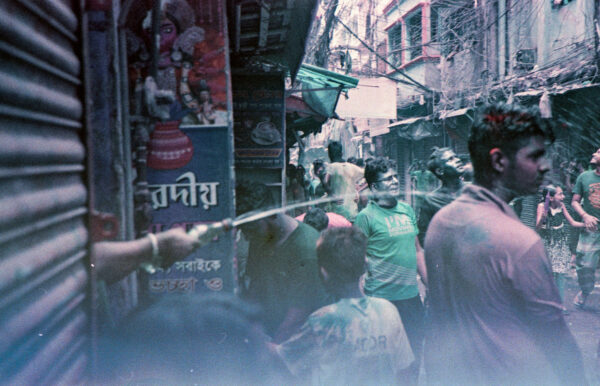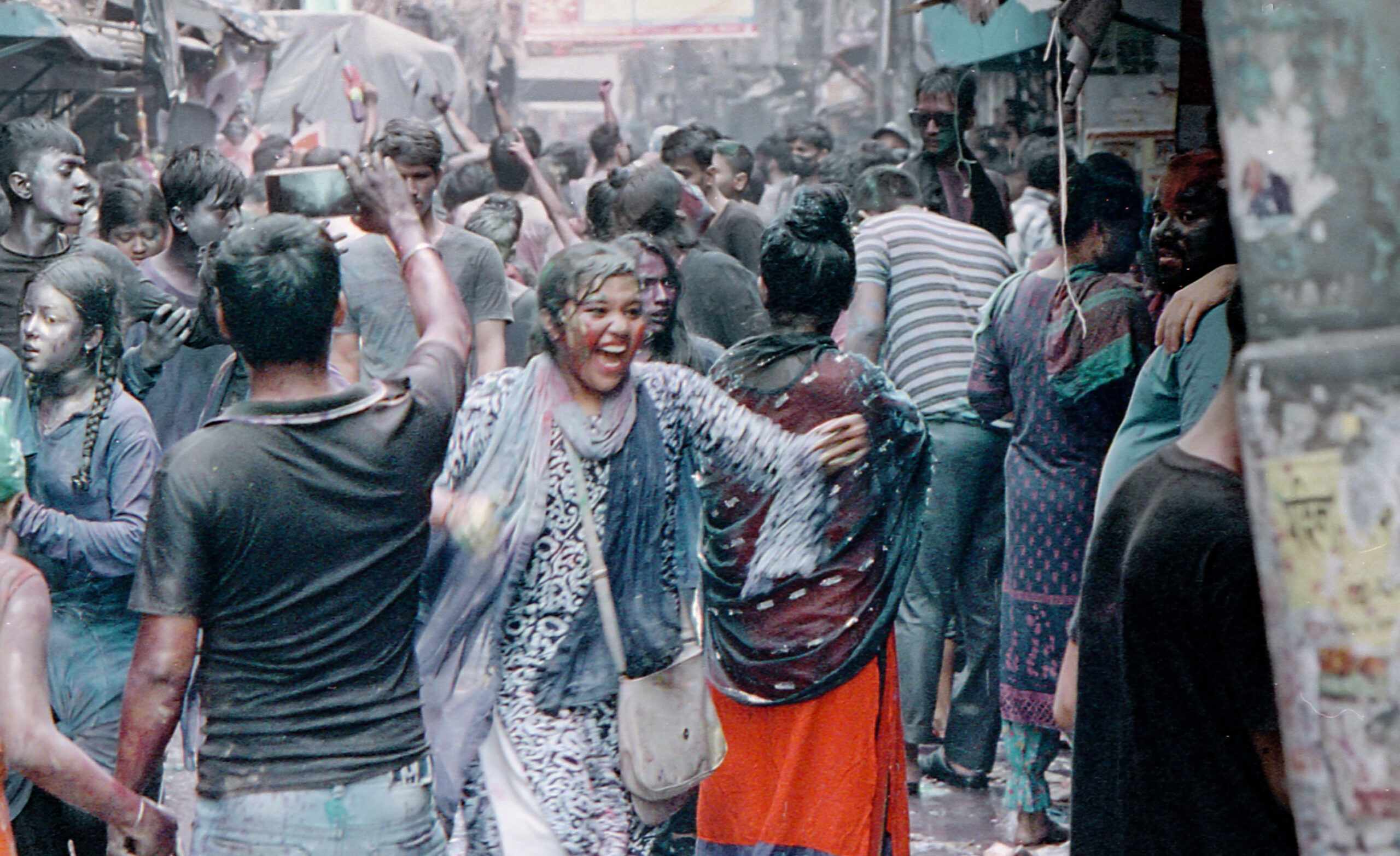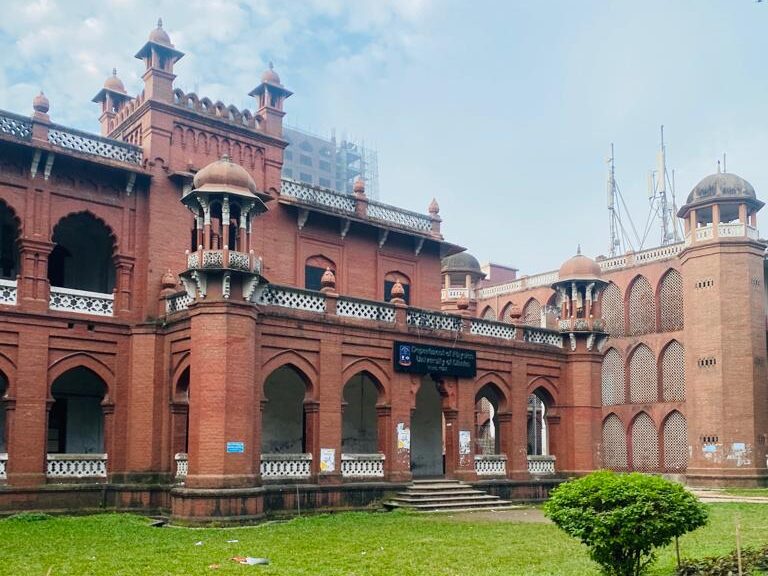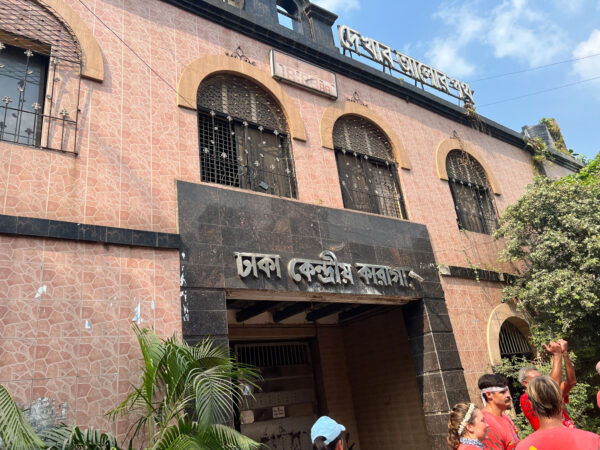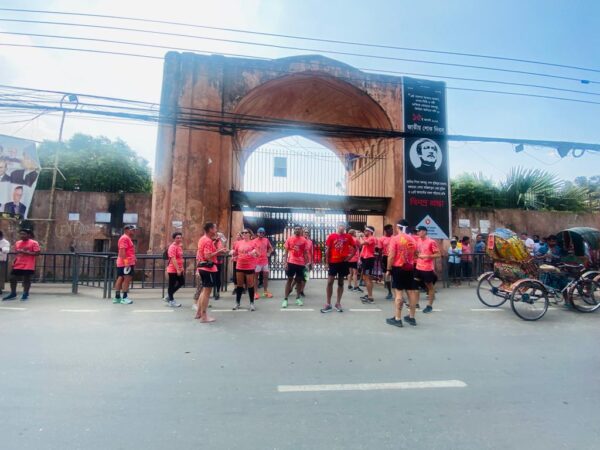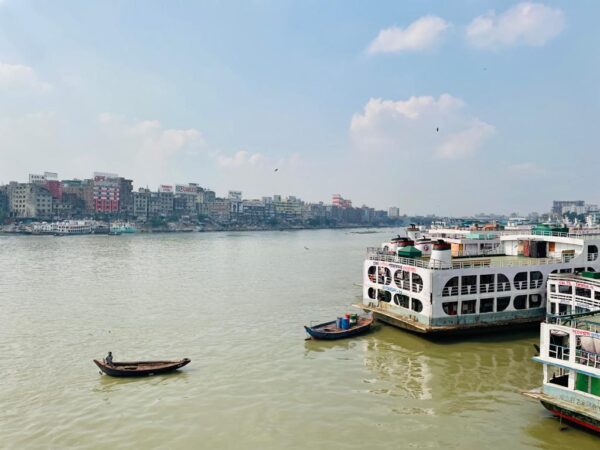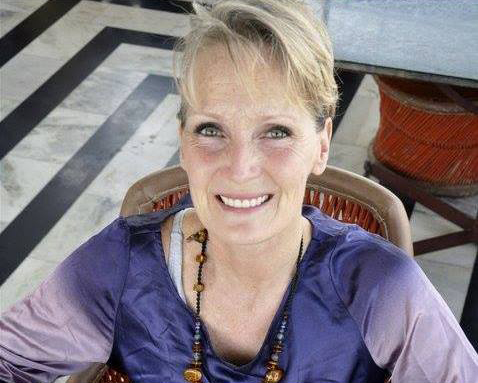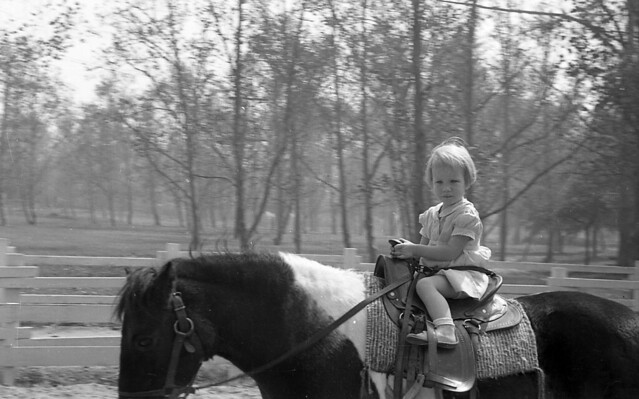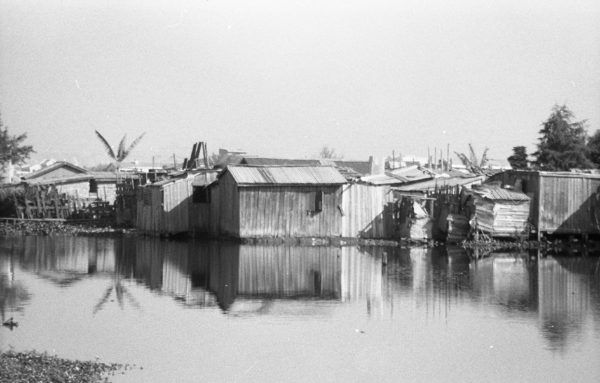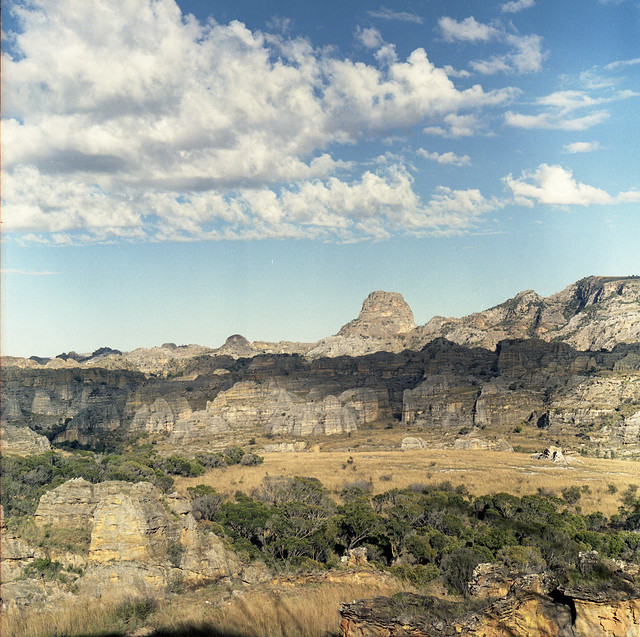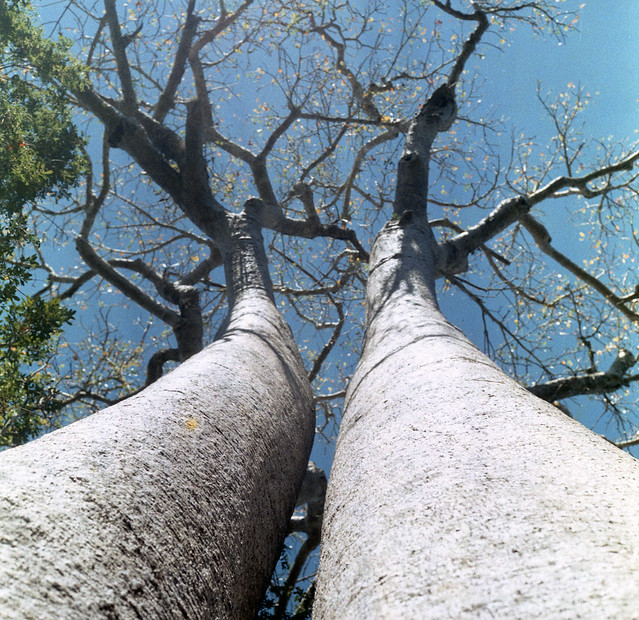A few months ago, we got word through the Dhaka expat network that someone was looking for “foreigners” to play roles in a Bangladeshi television show. No acting experience or Bengali language experience required. It turns out that this “someone” was none other than television personality, writer, producer, comedian, voice actor, and singer Hanif Sanket. With some 10 million followers on Facebook, he’s considered Bangladesh’s most popular television personality. He was looking for foreigners to participate in Ityadi, which means “et cetera.” Debuting in 1989, it’s the longest running TV show in Bangladesh and the longest running magazine show in the world. Over 50 million viewers watch the annual Eid al-fitr special, which included a popular segment in which foreigners acted out roles in a 10-minute skit on a Bangladeshi social issue, all culminating in a big dance production.
So naturally, I declined….

No, for real. I was feeling overwhelmed and didn’t want to commit to something new – it would require attending rehearsals and dance practices 2-3 times per week for the next 7 weeks. But my partner Anne was game, and so I’d drop her for her practices at the Dutch Club in Dhaka and work on my computer in the restaurant area until they were done.
Five or six weeks went by, and I started taking an interest. My partner had the dance routine down and had one line in Bengali. I asked if it might still be possible to sign up and was told they needed extras. Fine. I was actually more interested in seeing the making of the show – what happens behind the scenes to produce a TV show that will be viewed by 50 million people. Show up for one rehearsal and show up for one day of filming. Too easy!
Then, sitting in a circle as everyone went through their lines, Sanket realized that “reporter #4” wouldn’t be able to participate, and suddenly I was in! And one single line in Bengali. The hardest part was having to pronounce “heavy item” the way a local would pronounce it. Not “heavy eyedum” but, well – you’ll see.
So we rolled up in the wee hours of the morning one Saturday and were loaded into vans that sped us off to Sanket’s multistory office/work space. The dancers were given costumes and had makeup applied. The men, just a light dab here and there.
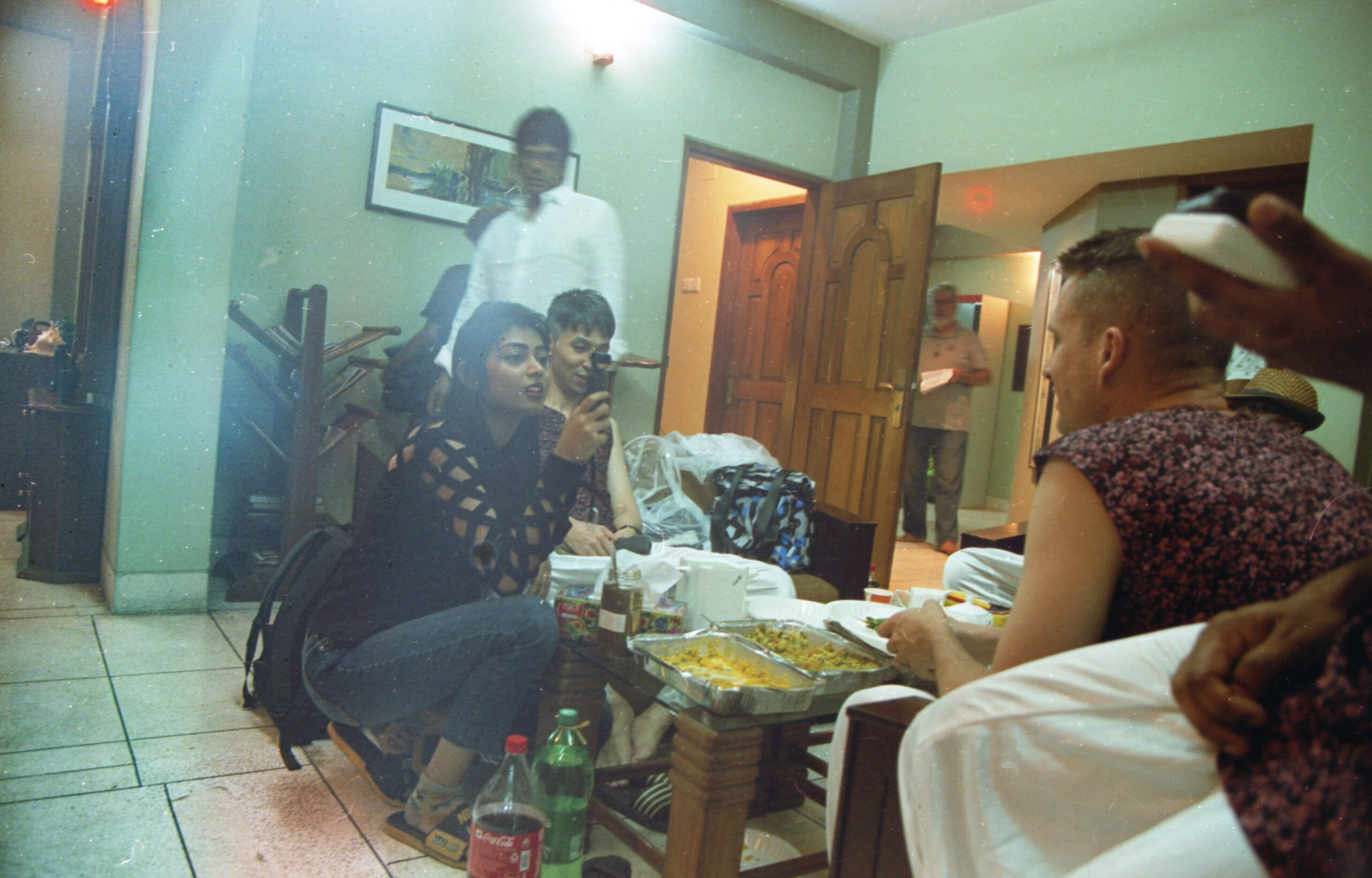
The women received a much more liberal application of makeup. By 10 am, we were headed toward the filming location, where the first task would be to film the dance routine. In two locations, but ultimately, they must have filmed the routine 8-10 times in total. A couple of times with just cameras in front, a couple of times with a drone, and in the end, camera operators were physically walking between the lines of dancers to get closeups. A few kids, who performed amazingly, were shot separately, and within the overall group. Each time, the choreographers would be up front demonstrating the routine in case anyone forgot. All material to be spliced together as one continuous routine with multiple cameras. In between takes, makeup artists would rush in and fix sarees, hair, dab sweaty foreheads.


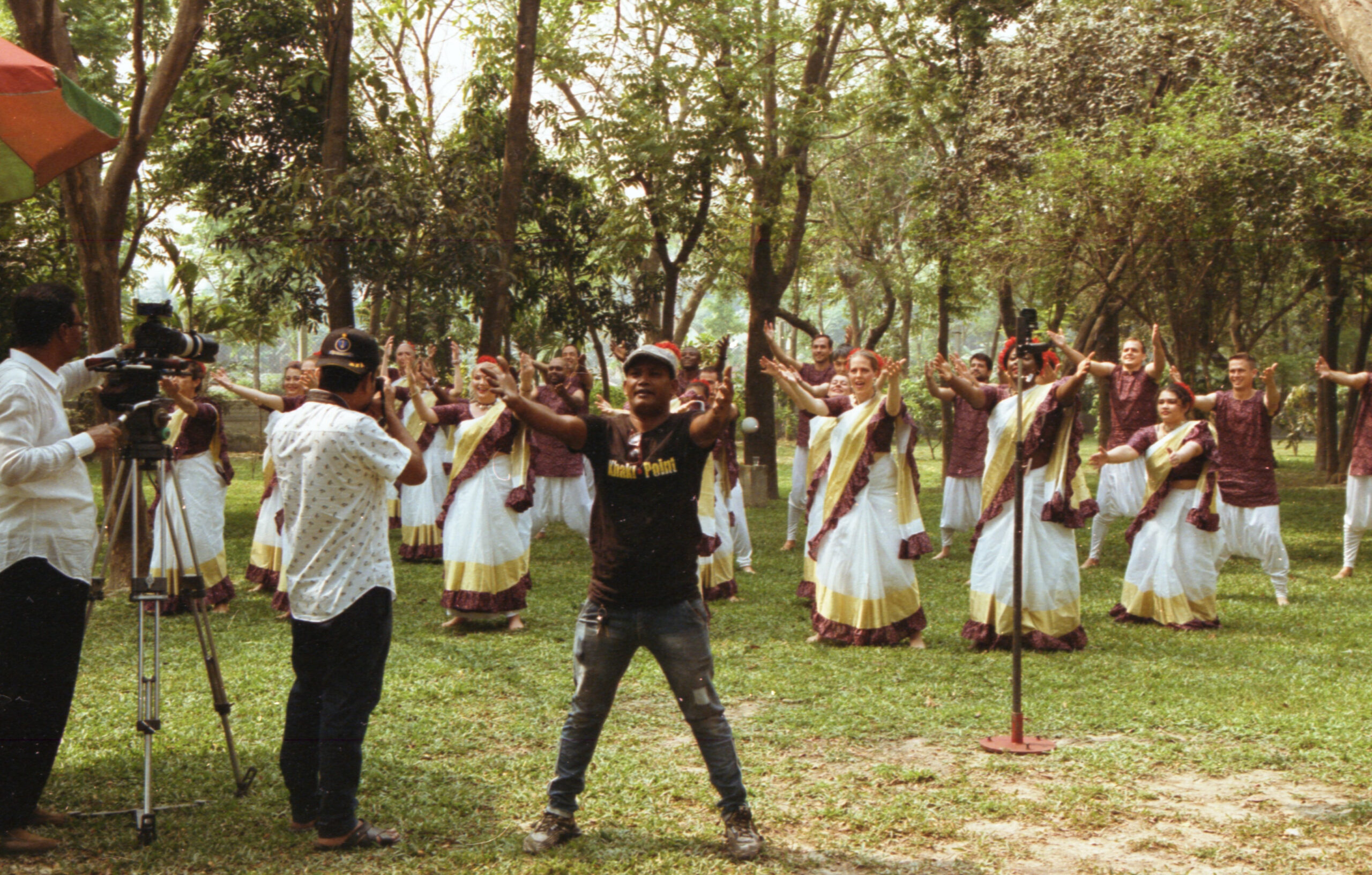
One thing that surprised me was that the cameras, for a show running 34 years, were surprisingly consumer-level. A Mavic drone, a few GoPro Heros up on sticks, some higher-end DSLRs and one main camera with a lens worth more than any of my cameras as the main.

By noon we were shooting scenes at different locations around the property and in the nearby village. It was impressive to watch Hanif work – he’s clearly a perfectionist with a fully-developed idea in his mind of the outcome he is trying to achieve. My co-participants, from all different countries, spoke impressive Bengali but all with accents that were noticeable to a non-Bengali speaker like me and probably add a lot for the Bengali viewer – Spanish Bengali, southern American Bengali, British English Bengali, Dutch Bengali…ityadi…. But Hanif would make them repeat every phrase, every gesture – until he had exactly what he needed. As a filmmaker, I was completely stumped by a couple of aspects of the production. First, no one was wearing headphones to monitor what the microphone was picking up – was the dialogue intelligible, was there background noise, wind, side conversations, etc – no one seemed concerned. There was either the camera-mounted mic or a handheld boom mic; no lavaliers, no second mic, and I didn’t see a sound processor.

Second, as the day wore on and the threat of running out of daylight began to loom, Hanif grew increasingly impatient. But no one was off the hook – every word, every phrase, had to be correct. And so at times he was prompting actors line by line – even word by word – and repeating phrases so often, it seemed inconceivable to me that he’d be able to edit the shots in such a way that it wouldn’t be full of jump cuts, or with his voice overlapping the actor’s… When I asked about these things, I was assured that this was a well-oiled team of people who had been working together for so long that it would magically all work out.


The entire cast, probably representing a dozen + countries – pose with Hanif Sanket after the final shoot.
But somehow – as I’m sure happens every year – filming wrapped up just as the mosquitoes started coming out. Hanif had been checking with us all over the course of the day to make sure we’d had a chance to eat lunch from the wonderful catered spread he had organized – but only after filming was complete did he finally sit down and eat some food. It was a wrap. Now it was just waiting for the vans to bring us back home in the dark…and wait six weeks until the second day of Eid to see the final result.
If you’d like to wait six weeks as well to replicate our experience, check back with us later. If not, here’s the final result, at 5.7 million views on YouTube as of this writing. Can’t wait until next year – maybe I’ll learn how to dance this time!




